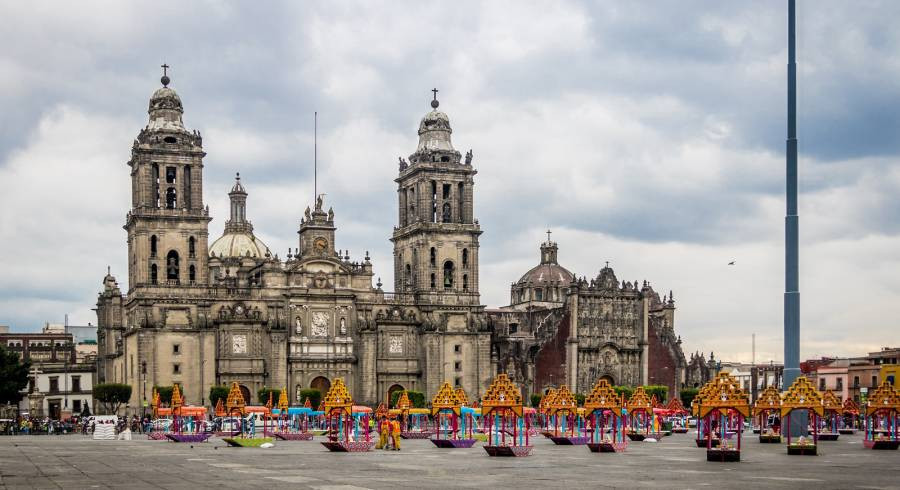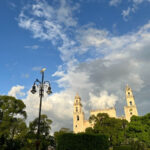Mexican Architecture is a vibrant tapestry woven from diverse threads of history, with each style narrating a compelling story of the nation’s past. From the grandeur of colonial-era structures gracing bustling cities to the remarkably preserved ruins of pre-Columbian Mesoamerica nestled in rural landscapes, Mexico offers an architectural journey unlike any other.
Much of contemporary Mexican architecture is deeply rooted in its Hispanic heritage, echoing architectural styles found in Spain’s historic urban centers. Wander through cities like Guanajuato, where candy-colored colonial houses cascade along cobblestone streets, or explore San Cristóbal de las Casas in Chiapas, famed for its bright yellow cathedral and the intricately adorned Temple of Santo Domingo. These cities showcase the enduring influence of Spanish colonial design on Mexican urban landscapes.
Mérida offers a unique blend of magnificent Maya ruins alongside colonial churches and elegant Beaux Arts buildings, showcasing architectural layers through time.
For those seeking older architectural narratives, the jungles of Palenque unveil the mystique of early Maya temples, some dating back to 226 BC. In Yucatán, Chichen Itza stands as a testament to Maya civilization, once the largest settlement between 600 and 900 AD. Key structures include El Castillo, a stepped limestone pyramid, and the Great Ball Court, the largest surviving ancient ballcourt in Mesoamerica. These sites provide a glimpse into the sophisticated architectural prowess of the Maya civilization.
Beyond the Maya, Mexico’s architectural heritage includes the imposing temples of the Aztecs, recognized for their tiered designs and symbolic ornamentation. Teotihuacan, near Mexico City, is perhaps the most celebrated Aztec site. However, lesser-known yet equally captivating ruins await discovery in Acatitlan, revealing the breadth of Aztec architectural influence.
Venturing off the well-trodden path leads to Monte Alban, near Oaxaca, a pre-Columbian center of Zapotec and Mixtec culture dating back to the 8th century BCE. This site unfolds with plazas, pyramids, intricate underground passages, and nearly 170 tombs, offering a profound exploration into these ancient cultures.
Exploring Architecture in Mexico City
Mexico City is an architectural melting pot, where layers of history converge. From Aztec ruins in the historic center, known as the centro histórico, to French-style boulevards laid out in the 19th century, the city showcases a remarkable architectural evolution.
 Mexico City Metropolitan Cathedral showcasing a blend of architectural styles and Day of the Dead decorations in the Zocalo
Mexico City Metropolitan Cathedral showcasing a blend of architectural styles and Day of the Dead decorations in the Zocalo
A tour of the Metropolitan Cathedral in the capital is essential to understand this architectural fusion. This key colonial landmark, built over 250 years, embodies a blend of Gothic and Baroque styles. Intriguingly, it stands on the very site of the Aztec Templo Mayor and was constructed using stones repurposed from the ancient temple, symbolizing the layering of cultures.
Mexico City also embraces contemporary architectural innovation. The 1960s National Museum of Anthropology, with its iconic concrete umbrella courtyard, and the futuristic Museo Soumaya, adorned with thousands of metallic hexagonal tiles, exemplify the city’s embrace of modern design.
Discover Mexico’s captivating architectural narrative spanning centuries. Consider a customized, private tour to fully immerse yourself in this rich heritage.
